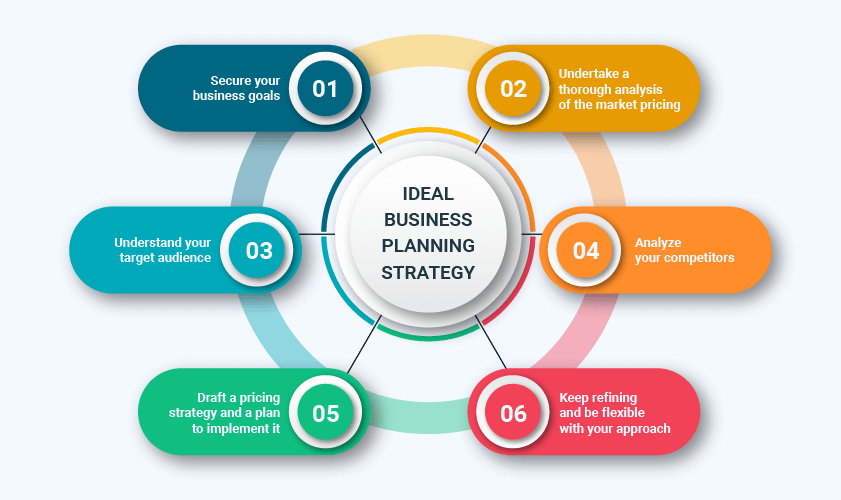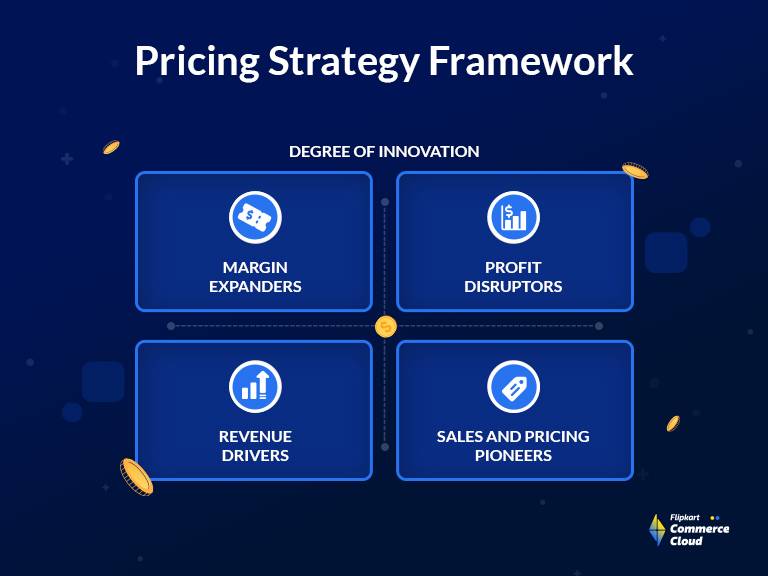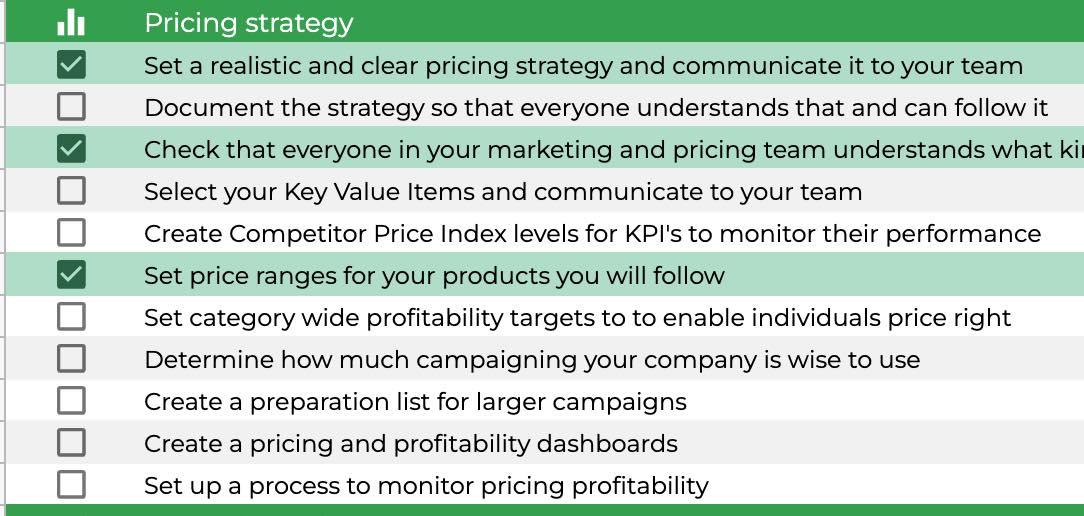Assessing the Effectiveness of Your Pricing Strategy in an Altering Market
Assessing the Effectiveness of Your Pricing Strategy in an Altering Market
Blog Article

Master Effective Rates Approaches to Make Best Use Of Profit
In the ever-evolving landscape of commerce, understanding efficient prices strategies is necessary for organizations aiming to take full advantage of profit. A nuanced understanding of rates psychology can substantially influence customer actions and buying choices.
Comprehending Pricing Psychology
Comprehending prices psychology is vital for businesses aiming to maximize their prices strategies. This field checks out how customers regard prices and exactly how these assumptions affect their buying decisions. Trick principles in pricing psychology include the anchoring result, where the first rate provided serves as a recommendation factor for customers, and the principle of cost level of sensitivity, which varies amongst different client segments.
Furthermore, organizations can leverage the notion of regarded value, where the viewed benefits of a service or product can justify a higher price point. For instance, premium pricing can produce an aura of exclusivity, bring in customers that link greater prices with remarkable quality. On the various other hand, psychological pricing, such as establishing a rate at $9.99 rather than $10, can considerably influence customer actions by making prices show up a lot more appealing.
Additionally, shortage and urgency can enhance the perceived value of products, triggering quicker buying decisions. Understanding these psychological triggers allows services to formulate rates techniques that not only drive sales however additionally foster consumer loyalty. Thus, understanding prices psychology is crucial for reliable rates approach formulation, leading to improved profitability and market positioning.
Implementing Value-Based Rates

First, conduct thorough market research study to identify the value vehicle drivers for your target audience. This can include attributes, top quality, brand reputation, and customer care. Next, section your clients based on their desire to pay and the value they perceive. By doing so, you can tailor offerings and pricing approaches to straighten with different segments.
Constantly keep track of market conditions and client responses to fine-tune your pricing technique over time. By executing value-based rates, businesses can enhance earnings while cultivating lasting customer commitment.
Discovering Dynamic Rates Designs
In today's quickly changing market landscape, vibrant prices models have actually become a powerful strategy for companies looking for to maximize revenue and respond to variations in demand. These designs permit firms to readjust their rates in real-time based upon numerous factors such as customer actions, market trends, and stock degrees. By leveraging data analytics and algorithms, organizations can identify optimal prices points that take full advantage of sales while remaining affordable.
Dynamic rates can take different kinds, including time-based prices, where prices fluctuate based upon time of day or period, and demand-based prices, which adjusts rates according to present customer need. This versatility not only enhances profitability but additionally enhances client satisfaction by providing rates that mirror real-time market conditions.
Implementing vibrant rates calls for a robust technical infrastructure and a deep understanding of client sectors. It is essential for businesses to monitor market signals and customer feedbacks continually, ensuring that prices strategies line up with wider business goals. Moreover, clear communication regarding pricing adjustments can assist alleviate consumer frustration and foster count on, ultimately leading to continual profitability in a competitive marketplace. Welcoming dynamic pricing can therefore be a transformative method in the pursuit for making best use of revenue.
Studying Competitor Pricing
Keeping an eye on competitor rates is important for organizations aiming to maintain an one-upmanship in their corresponding markets. By evaluating rivals' pricing techniques, firms can identify market trends, comprehend customer preferences, and change their rates appropriately. This evaluation involves gathering data on rivals' costs, promotional approaches, and item offerings to notify rates decisions.
To effectively evaluate rival prices, services must utilize different devices and techniques, such as rate tracking software application, marketing research records, and customer comments. This data can disclose just how competitors position their services and products, permitting organizations to separate their offerings or take on similar methods to stay relevant.
In addition, it is crucial to categorize competitors right into indirect and direct rivals. Direct competitors use similar service or products, while indirect competitors may accomplish the exact same client requirement with various services. Recognizing the subtleties between these groups will make it possible for organizations to customize their prices techniques more successfully.
Eventually, recurring rival pricing analysis is essential for making enlightened pricing choices. Visit Your URL It allows organizations to remain active in action to market shifts, guaranteeing they can confiscate opportunities and minimize risks connected with prices approaches.
Examining Pricing Performance
Recognizing exactly how rival rates influences market dynamics brings about a natural focus on assessing prices efficiency within one's own service. This assessment is essential for identifying locations of strength and opportunities for enhancement, inevitably improving profitability.

Furthermore, performing regular rates audits can disclose disparities in between expected and actual efficiency. This involves comparing rates information throughout different sectors and channels to comprehend variations and determine fads. Moreover, incorporating consumer responses can supply understandings into regarded worth versus actual rates, making sure placement with market assumptions.
Lastly, leveraging data analytics tools can facilitate deeper insights into rates performance, allowing businesses to make data-driven adjustments (Pricing Strategy). By consistently assessing pricing efficiency, organizations can adjust to market adjustments and optimize their strategies, ensuring sustained success in a competitive landscape
Final Thought
By leveraging rates psychology, organizations can improve viewed value and dressmaker prices to varied customer sectors. The adoption of dynamic and value-based prices models helps with real-time modifications based on need and client desire to pay.
Comprehending pricing psychology is important for companies aiming to optimize their prices approaches. Comprehending these mental triggers allows services to develop prices techniques that not only drive sales yet also foster consumer commitment. Thus, mastering pricing psychology is vital for efficient prices technique formulation, leading to boosted profitability and market positioning.
By examining competitors' prices approaches, companies can recognize market trends, recognize consumer choices, and change their pricing appropriately. By leveraging pricing psychology, organizations can improve perceived value and Full Article tailor prices to varied client sections.
Report this page